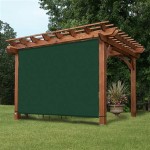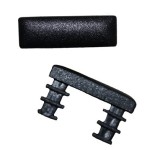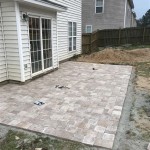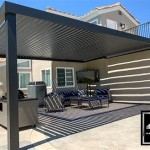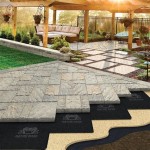Replacement Patio Table Tile Inserts: A Comprehensive Guide
Patio tables with tile inserts offer a blend of aesthetic appeal and practical functionality, enhancing outdoor living spaces. However, these tables are susceptible to damage, most commonly affecting the tile inserts. Cracks, chips, stains, and even complete tile disintegration are common issues that necessitate replacement. This article provides a comprehensive overview of replacement patio table tile inserts, covering various aspects from identification and selection to installation and maintenance.
Replacement tile inserts are available in a wide array of materials, sizes, shapes, and designs, allowing for customization and restoration of existing patio tables. The process of replacing damaged tiles is generally straightforward, requiring basic tools and minimal experience. However, proper planning and careful execution are crucial to ensure a seamless and durable repair.
Identifying the Correct Replacement Tile Inserts
The first step in replacing patio table tile inserts is to accurately identify the existing tiles’ specifications. This involves determining the tile material, dimensions, shape, and thickness. Matching these characteristics as closely as possible will ensure a proper fit and a visually consistent appearance.
Material: Common materials for patio table tile inserts include ceramic, porcelain, natural stone (such as slate or travertine), and glass. Ceramic tiles are a cost-effective option known for their durability and water resistance. Porcelain tiles are even more durable and resistant to staining. Natural stone tiles offer a unique, textured appearance but may require more maintenance. Glass tiles provide a modern aesthetic and are resistant to fading.
Dimensions: Precise measurements of the tile’s length, width, and thickness are critical. Using a ruler or measuring tape, carefully measure the dimensions of an existing tile. If all tiles are damaged, measure the recess in the table where the tile sits and subtract a small amount (typically 1/8 inch) to allow for grout lines. It is recommended to purchase a few extra tiles to account for potential breakage during installation or future replacements.
Shape: Patio table tile inserts come in various shapes, including square, rectangular, hexagonal, and even custom shapes. The shape must precisely match the existing tiles to ensure a seamless fit. Examine the existing tiles carefully to determine the shape and any unique features, such as beveled edges or rounded corners.
Thickness: Tile thickness is a less critical factor than dimensions and shape, but it still plays a role in ensuring a flush surface. Ideally, the replacement tiles should be the same thickness as the original tiles. If the thickness is slightly different, adjustments can be made during installation by adding or removing thin-set mortar.
Color and Pattern: Matching the color and pattern of the existing tiles is important for maintaining the aesthetic appeal of the patio table. If the original tiles are no longer available, consider selecting a complementary color or pattern that blends well with the table's overall design. Taking a damaged tile to a tile retailer can aid in finding a close match.
Once the tile specifications are determined, the next step is to search for replacement tiles. Online retailers, home improvement stores, and specialty tile shops are all potential sources. When ordering online, it is crucial to carefully review the product descriptions and images to ensure that the tiles meet the required specifications. Ordering samples before committing to a large purchase is highly recommended.
Installing Replacement Patio Table Tile Inserts
Installing replacement patio table tile inserts involves several steps, including removing the old tiles, preparing the surface, applying thin-set mortar, setting the tiles, and grouting. Proper preparation and careful execution are essential for a successful installation.
Removing the Old Tiles: Begin by carefully removing the damaged tiles. Using a chisel and hammer, gently tap around the edges of the tile to break the bond with the underlying surface. Wear safety glasses and gloves to protect against flying debris. If the tiles are difficult to remove, a heat gun can be used to soften the adhesive. Once the tiles are loosened, carefully pry them out with a putty knife or scraper.
Preparing the Surface: After removing the old tiles, thoroughly clean the surface where the new tiles will be installed. Remove any remaining adhesive, grout, or debris using a scraper, wire brush, or solvent. Ensure the surface is clean, dry, and level. If necessary, use a leveling compound to correct any unevenness.
Applying Thin-Set Mortar: Thin-set mortar is a type of adhesive used to bond tiles to a substrate. Mix the thin-set mortar according to the manufacturer's instructions, typically by adding water to a dry powder. Use a notched trowel to apply a thin, even layer of thin-set mortar to the surface. The size of the notch on the trowel will depend on the size and type of tile being installed. A 1/4-inch notched trowel is generally suitable for most patio table tile inserts.
Setting the Tiles: Carefully position the replacement tiles onto the thin-set mortar, pressing them firmly into place. Use tile spacers to maintain consistent grout lines between the tiles. Ensure that the tiles are level and flush with the surrounding surface. If necessary, gently tap the tiles with a rubber mallet to adjust their position. Allow the thin-set mortar to cure for at least 24 hours before proceeding to the next step.
Grouting: Grouting fills the gaps between the tiles, providing a watertight seal and enhancing the appearance of the finished surface. Mix the grout according to the manufacturer's instructions. Apply the grout to the grout lines using a grout float, pressing it firmly into the gaps. Remove excess grout with a damp sponge. After the grout has partially dried, use a clean cloth to polish the tiles and remove any remaining grout residue. Allow the grout to cure for at least 72 hours before using the patio table.
Maintaining and Protecting Patio Table Tile Inserts
Proper maintenance and protection are essential for prolonging the life of patio table tile inserts and preserving their appearance. Regular cleaning, sealing, and protection from the elements can help prevent damage and extend the lifespan of the tiles.
Regular Cleaning: Clean patio table tile inserts regularly to remove dirt, debris, and spills. Use a mild detergent and water to wash the tiles. Avoid using harsh chemicals or abrasive cleaners, as these can damage the tile surface. For stubborn stains, use a specialized tile cleaner or a solution of baking soda and water.
Sealing: Sealing tile inserts, especially those made of natural stone, is important to protect them from staining and water damage. Apply a tile sealer according to the manufacturer's instructions. The frequency of sealing will depend on the type of tile and the level of exposure to the elements. Generally, sealing should be done every one to two years.
Protection from the Elements: Protect the patio table from the elements, especially during harsh weather conditions. Cover the table with a waterproof cover during rain, snow, or extreme heat. This will help prevent cracking, fading, and other forms of damage. Consider storing the patio table indoors during the winter months to further protect it from the elements.
Addressing Cracks and Chips Promptly: If cracks or chips develop in the tile inserts, address them promptly to prevent further damage. Small cracks can be repaired with a tile repair kit or epoxy filler. Larger cracks or chips may require replacing the entire tile. Ignoring these issues can lead to water damage and further deterioration of the table.
Preventing Scratches and Abrasions: Avoid placing heavy or sharp objects directly on the tile surface, as this can cause scratches and abrasions. Use coasters under drinks and placemats under dishes to protect the tiles. Consider using a protective film or coating on the tile surface to prevent scratches.
Proper Grout Maintenance: Grout is susceptible to staining and cracking. Clean grout regularly with a grout cleaner and seal it to prevent staining. If the grout becomes cracked or damaged, repair it promptly to prevent water damage.
By following these maintenance and protection tips, the longevity and beauty of patio table tile inserts can be significantly extended. Consistent care ensures that the patio table remains a functional and aesthetically pleasing addition to any outdoor living space for years to come.
Ultimately, replacing patio table tile inserts is a manageable task that can restore the beauty and functionality of outdoor furniture. Proper identification, careful installation, and consistent maintenance are the keys to a successful and long-lasting repair. By understanding the different aspects of tile replacement, anyone can confidently tackle this project and enjoy a revitalized patio table.

Tile Top Patio Table Makeover Chica And Jo

Tile Top Patio Table Makeover Chica And Jo

Tile Top Patio Table Makeover Chica And Jo

Tile Top Patio Table Makeover Chica And Jo

Tile Top Patio Table Makeover Chica And Jo

Have A Question About Hampton Bay Crestridge 7 Piece Steel Padded Sling Outdoor Patio Dining Set In Putty Taupe Pg 2 The Home

Garden Treasures Undefined At Lowes Com

Have A Question About Hampton Bay Crestridge 7 Piece Steel Padded Sling Outdoor Patio Dining Set In Putty Taupe Pg 2 The Home

How To Make A Tile Patio Table Modern For Less Than 50 Maggie Mcgaugh

Tile Top Patio Table Makeover Chica And Jo


